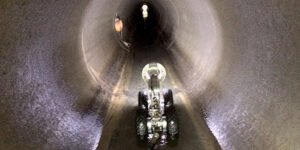Pest Control Tips and Advice!
Before performing any pest control treatment, we are often asked if the treatments are safe for children and pets. This is a good question to ask, and in fact, because safety is our number one priority, we always perform a risk assessment before performing any treatment. This is primarily to determine if there are children or pets on the premises, but we also consider environmental impacts. So, are pest treatments safe? It’s probably worth looking at general pest and rodent treatments separately before considering environmental safety…
Safe treatments for pest control!
The chemicals used in pest control are much safer than before, but it is still important to follow some general precautions. Whenever we spray, we must ensure that pets and children (and even adults!) are kept away from the area to be treated. And they should be kept out of the treatment area until the treatment has dried. Indeed, when the care is wet, it passes through the skin more easily.
Environmental safety!
When it comes to safety, environmental safety is also very important. For insecticide sprays, we are generally concerned about the impact on bees and the impact on aquatic life. Since the products are insecticides, they will harm bees. However, since many places we spray (e.g. exterior walls of buildings) are not where the rest of the bees are, this is usually not a big problem anyway. However, if the treatment consists of spraying vegetation, care must be taken to ensure that the areas to be sprayed are free of blooming flowers. Although modern insecticides have an excellent safety profile against mammals, they can impact aquatic life at very low concentrations. When spraying inside and outside the home, we make sure that all aquariums or ponds are covered so that the splashes do not accidentally fall on the water. Additionally, when providing termite treatment options, we consider whether the building is located near a watercourse or on a sloping block, as soil-applied termicides could enter watercourses.
There are also significant environmental risks when using rodenticide. First, there’s the direct risk: that the opossums might eat the bait. Because opossums are native animals, causing them harm or death can result in significant fines. Then there is the indirect risk, that of secondary poisoning. This is where predators, such as raptors, eat rodents that have eaten rodent bait and then get hit in turn. Using pest control professionals who understand the risks and take steps to prevent these adverse events (for example, using lockable bait stations) makes sense to prevent any untargeted deaths. So, in answer to the question, are pesticide treatments safe for children, pets, and the environment? The answer is yes, provided it is carried out by an experienced and professional pest control operator who puts safety first. At Dotless Pest Professional, you can be sure it is!


